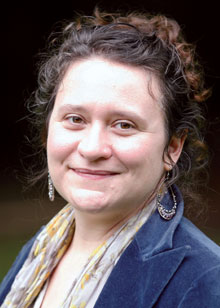“Given the frequency with which intensive intervention recommendations are touted as evidence-based in the U.S., I think it is compelling that we don’t see evidence of that when we zoom out and look across studies,” lead author Micheal Sandbank, Ph.D., told Psychiatric News. Sandbank is an assistant professor of occupational science and occupational therapy at the University of North Carolina at Chapel Hill.
Intensity ≠ Results
Sandbank and colleagues used data from 144 studies that assessed the four most common nonpharmacological interventions:
•
Naturalistic developmental behavioral interventions, which are child-led and focus on delivering therapy within natural environments and routines such as play.
•
Traditional behavioral interventions, which are adult-led and make use of instruction, prompting, and positive reinforcement.
•
Technology-based interventions that rely on devices such as computers or robots.
•
Developmental interventions, which are child-led and work on skills to achieve developmental milestones.
The researchers found no evidence that increasing intervention intensity was associated with increasing benefits, regardless of intervention approach. However, they stressed that this does not mean that children with ASD should be left without support.
“It is likely that there is a minimum amount needed for intervention to have any benefit at all and, potentially, an optimal amount of intervention that is dependent on the child,” they wrote. “Unfortunately, current evidence does not offer clear values or ranges for those amounts.”
Sandbank said that current recommendations for intensive intervention upon diagnosis originated from a flawed quasi-experimental study in the 1980s. “There have been additional studies since then,” she said, “but most were [also] quasi-experimental and compared intensive intervention with different uncontrolled supports, failing to isolate the effect of intensity specifically from the [broader] effect of providing systematic and comprehensive intervention.
“My goal here is to make it clear to providers that the evidence supporting high amounts of intervention for young children [with ASD] is not as robust as it might seem in guidelines, and that this recommendation should not be their default,” Sandbank said. “While some children may thrive with intensive intervention, others may not.”
Eric Hollander, M.D., who was not involved in the research, agreed. “There are some who do have a good response, but the larger point is that you need to personalize treatment based on the individual features [of the child’s autism],” said Hollander, director of the Spectrum Neuroscience and Treatment Institute in New York, a professor of psychiatry at Albert Einstein College of Medicine, and director of the Autism and Obsessive Compulsive Spectrum Program at Einstein and Montefiore.
Hollander added that symptoms of ASD may differ depending on the child’s age at presentation and do not remain static over time. “They will present with very different symptoms at different developmental stages, and have one set of symptoms when very young, another in middle school, and another as adults,” he said. “Symptoms also vary depending on whether the person is low-functioning or high-functioning.”
Hollander cautioned mental health professionals to weigh the benefits and risks of early intensive interventions. “The biggest risk is that if a child is spending 40 hours a week in intensive intervention, they aren’t playing or [engaging in] other recreational activities, and they aren’t getting normal developmental exposures,” he said.
Working With Families
Sandbank said that many parents will have heard about intensive intervention and believe that it is the only type of treatment that will help their child. “I think it may be helpful for families to know that the evidence base is rapidly growing and changing,” Sandbank said. “Only 10 years ago, just a quarter of the controlled group studies that are currently available had been published. That means that [mental health professionals] who were trained just five or 10 years ago may be giving outdated recommendations without realizing it. Psychiatrists can offer this information as a way to help families understand why they may be consistently hearing different messages from other families and other [mental health professionals].”
Sandbank stressed the importance of family involvement. “I think families need to be reassured that they know their child and their own family, and they have the tools to monitor how an intervention is going,” she said. “I know families who have received high-intensity intervention who felt that their child blossomed. [But] I’ve also known families who received intensive intervention but didn’t see improvements in their child, who felt stressed by how much the intervention interfered with their daily routines, and who saw signs that their child was unhappy.”
She added that despite signs that intensive intervention wasn’t working, some families stayed with it because they had heard that it was the gold standard. “That’s why it is important to be clear about the state of the evidence base, so families know that every child’s story is different and they know how to watch for progress or harm and make decisions based on what they observe,” Sandbank said.
This study was supported in part by the National Center for Advancing the Translational Sciences of the National Institutes of Health. ■


